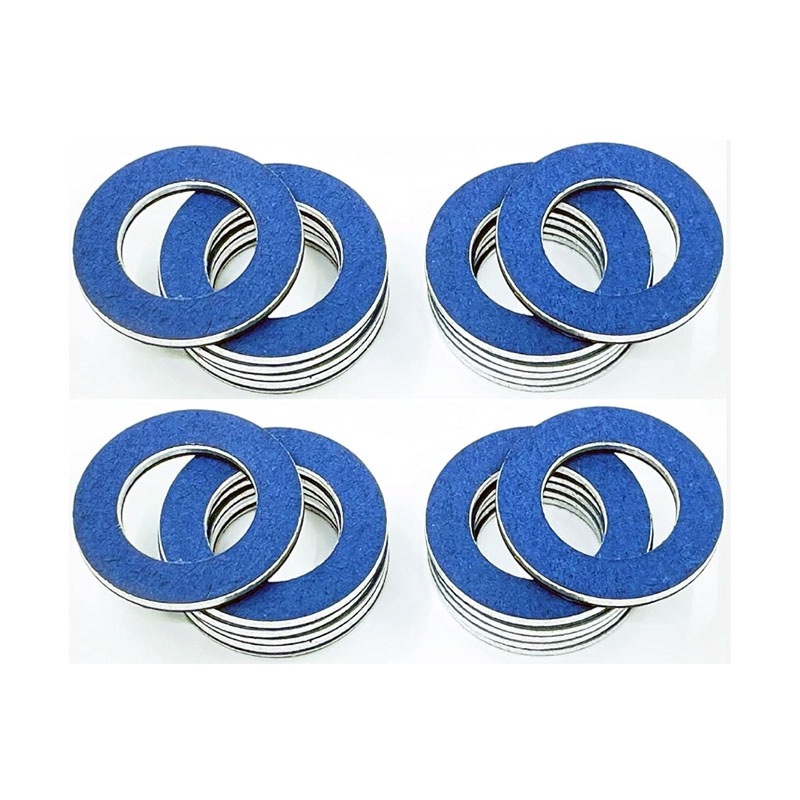Choosing the Right Liquid Gasket for Your Oil Pan Installation
Liquid Gasket for Oil Pan An Overview
Liquid gaskets have become an essential component in modern automotive maintenance and repair. Particularly for oil pans, which are critical in maintaining the integrity of the engine lubrication system, the use of liquid gasket products offers several advantages over traditional solid gaskets. This article aims to explore the benefits, application methods, and considerations when using liquid gaskets for oil pans.
Understanding Liquid Gaskets
Liquid gaskets are sealant materials designed to create a reliable seal between two surfaces. Unlike traditional gaskets made of rubber or cork, liquid gaskets are typically formulated from silicone, polyurethane, or other polymer-based compounds. These materials can be applied directly onto the surfaces to be sealed, providing flexibility and adherence that can accommodate slight misalignment and variations in surface flatness.
Advantages of Liquid Gaskets for Oil Pans
1. Ease of Application Liquid gaskets are user-friendly and allow for easy application. The sealant can be squeezed from a tube, ensuring a uniform layer that can fill in gaps effectively. This can save time during installation compared to fitting a pre-cut gasket.
2. Customization Users can control the amount of sealant used, allowing for customization according to the needs of the application. Liquid gaskets can be applied in varying thicknesses, which can be particularly beneficial for irregular surfaces.
3. Durability Most modern liquid gaskets offer excellent resistance to oil, heat, and chemicals, making them suitable for use in environments where traditional gaskets may fail. This durability helps prevent leaks, which is crucial for maintaining engine performance and extending engine life.
4. Versatility Liquid gaskets are not limited to oil pans. They can be proficiently used in various engine applications, including valve covers, timing covers, and more. This versatility makes them a valuable addition to any mechanic's toolkit.
Application Method
liquid gasket for oil pan

Applying a liquid gasket correctly is crucial for achieving a proper seal. Here is a step-by-step guide
1. Clean the Surfaces Thoroughly clean both the oil pan and the engine block to remove any old gasket material, oil, and debris. A clean surface ensures good adherence of the liquid gasket.
2. Apply the Sealant Apply a continuous bead of liquid gasket around the oil pan's mating surface. The bead should be thick enough to fill gaps but not so thick that it squeezes out excessively when the pan is tightened.
3. Join the Surfaces Carefully position the oil pan onto the engine block, aligning it correctly to avoid misalignment. Press down gently to ensure contact with the sealant.
4. Fasten Appropriately With the oil pan in place, tighten the bolts in a criss-cross pattern to distribute pressure evenly. It's essential to follow the manufacturer's torque specifications to avoid over-tightening, which could damage the seal.
5. Curing Time Allow the liquid gasket to cure as specified by the manufacturer before adding oil or starting the engine. This period is crucial for the gasket to form a reliable seal.
Considerations
While liquid gaskets offer numerous benefits, some considerations need attention. Compatibility with engine oils is a priority, as some sealants may break down over time when exposed to specific types of oil. Additionally, always refer to the manufacturer’s instructions regarding curing times and application techniques to ensure optimal performance.
Conclusion
Liquid gaskets for oil pans represent a modern solution to an age-old problem of achieving a reliable seal. Their ease of application, durability, and versatility make them an attractive choice for both professional mechanics and DIY enthusiasts. By understanding how to apply and use liquid gaskets properly, users can ensure that their engine’s oil pan is sealed effectively, thereby maintaining engine performance and longevity.
-
Understanding Automotive Oil Seals: Essential Components for Engine and Shaft Protection
News Jul.30,2025
-
The Importance of Heavy Duty Seals in Industrial and Residential Applications
News Jul.30,2025
-
Exploring Industrial Oil Seals: From Felt Oil Seals to TTO and CFW Solutions
News Jul.30,2025
-
Essential Guide to Oil Seals: From Radial to Metal-Cased Seals for Industrial Reliability
News Jul.30,2025
-
Choosing the Right Oil Seals and Gaskets for Industrial and Automotive Applications
News Jul.30,2025
-
Cassette Seals: Durable Sealing Solutions for Harsh Environments
News Jul.30,2025
-
Understanding the Front Main Engine Seal: Purpose, Maintenance, and Installation
News Jul.29,2025
Products categories















